How to Grow Morning Glories Indoors
How to grow morning glories indoors? If you want to dive into these beautifully colored, delicate annual plants’ worlds and learn all about their planting, growing and caring, you are in the right place! You’ll read interesting facts about Morning Glories, and you’ll receive tips and tricks on how to grow them and care about them. Let’s talk about these beautifully formed blooms that open in the sun and learn how to grow them indoors.
Facts About Morning Glories
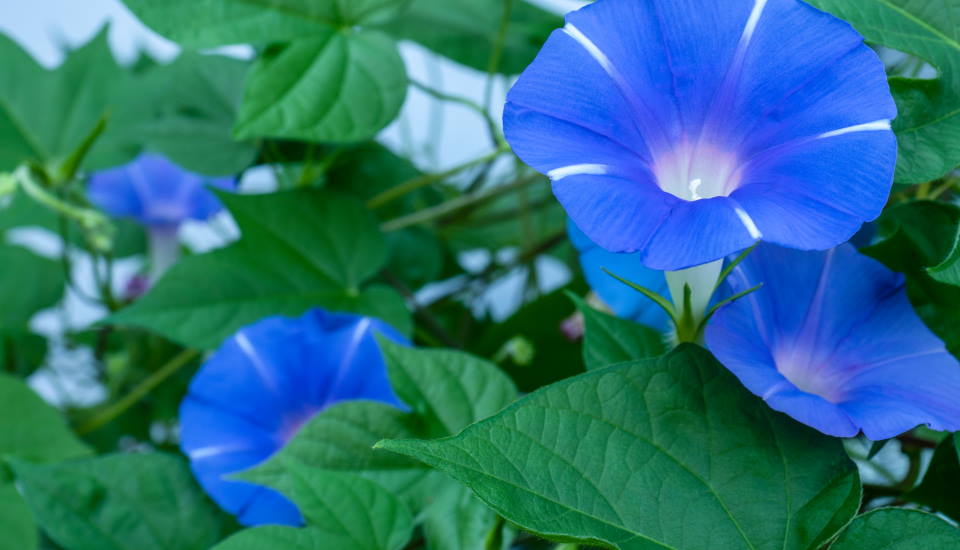
Their common name might be Morning Glories or Morning Glory, but their botanical name is Ipomoea purpurea. Morning Glories originate from the Convolvulaceae family, and their plant type is annual in areas that get below 45 F. Even though their plant type is annual in colder climates, they can actually reseed and return year after year by themselves. So, they are considered perennial in hotter, more tropical settings. Morning Glories’ mature size is approximately 6 to 10 feet tall and 3 to 6 feet wide, but of course, these numbers may change due to variety. Morning Glories’ bloom time is summer and fall, more specifically June to October, and their flower colors vary from pink, purple, blue, white, and red to bi-colored.
When Should I Plant My Morning Glories?
Morning Glory seeds are so easy to plant and grow. All you have to do is just wait till the ground gets warmer by late spring or even early summer. Once the ground has warmed to at least 64 F, you may sow your Morning Glory seeds. Since they are easy to grow, you can start to seed indoors four to six weeks before your last frost date. But as mentioned before, they can grow when they are direct sown in the ground as well. The reason that one should wait for the ground to warm to at least 64 F is that Morning Glories are delicate annuals, and they are sensitive to colder climates.
How To Plant Morning Glories?
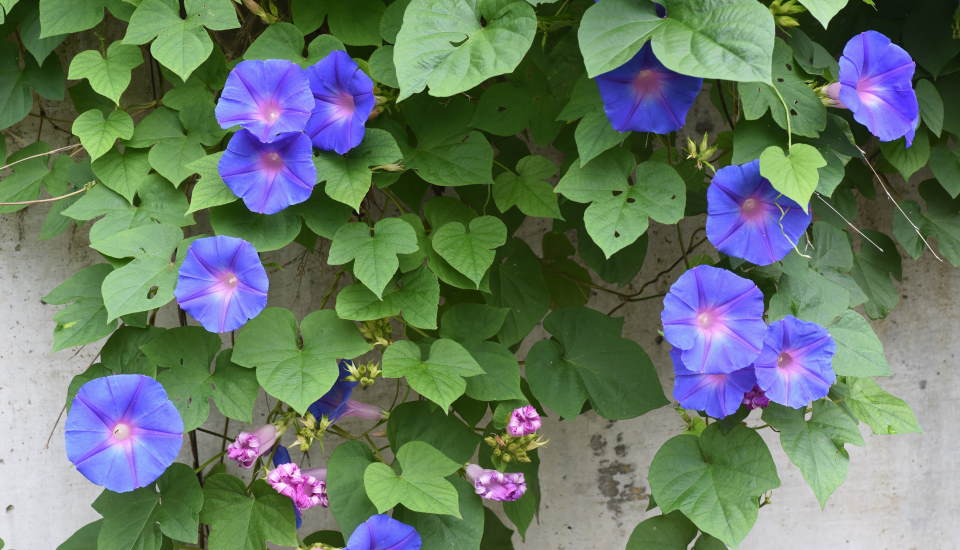
Seeds should be filed to shatter the outer shell and soaked for 24 hours before planting to aid germination. Filing down the seeds just enough to break the outer shell, then soaking them for 24 hours before planting, improves germination rates. Morning glory seeds have a tough seed coat; therefore, scarification will speed up germination.
Rub the seeds between two pieces of coarse sandpaper for a few seconds before immersing them overnight. In the morning, they will be plumper and appear to be ready to sprout. Cover with a quarter-inch of soil. The seeds should be spaced a few inches apart. When planting, give them plenty of water and keep the soil moist until the seeds sprout. Be really careful while transplanting since Morning Glories don’t like changing their homes. In approximately five to seven days, seedlings should appear.
What to Do When Growing Morning Glories Indoors?
Before talking about what to do when we grow Morning Glories indoors, let’s think about why we would want to grow them indoors in the first place. Well, first and foremost, you may not have large fences around your garden, or maybe you don’t own a garden and still want to grow Morning Glories indoors. Another reason why you might want to grow Morning Glories indoors is that Morning Glories might get a bit wild once they are seeded in larger areas. They might try to take over your other plants’ places. So, in order to put a stop to that, you might want to grow your Morning Glories in pots and containers.
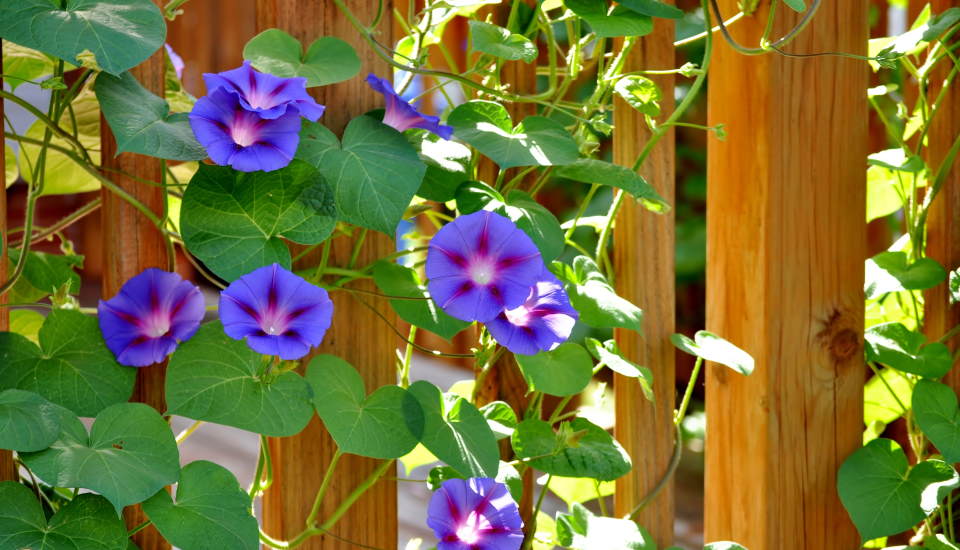
If you’re growing Morning Glories indoors, keep in mind that they require a lot of sunlight, at least six to eight hours every day. As mentioned before, Morning Glories can grow up to 6 to 10 feet tall and 3 to 6 feet wide. So, to keep them contained, make sure they have something to vine around.
For the vine to grow on, you may attach a trellis structure to the pot or behind the pot. Morning Glories can be grown in containers according to the same rules as other vines. To avoid straining the young seedlings, you should use a lightweight, organic planting medium and water them with a gentle spray throughout the early Morning Glory growth stages. Put your Morning Glory in front of a window that gets lots of sunlight or under a grow light since Morning Glories love to be under sunlight. When the plant has established itself, keep the medium moist but not soggy.
How to Take Care of Our Growing Morning Glories?
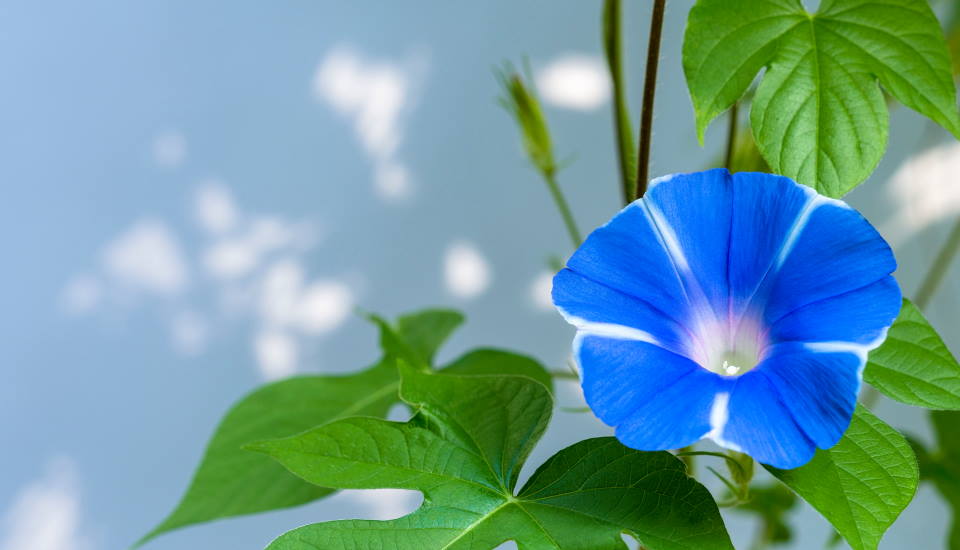
Morning glory plants are simple to care for. They don’t require much effort after they’ve been established. The soil should be moist but not soggy. Container plants, especially in hotter climates, might need extra watering. Morning glories can start flowering by mid-summer with consistent care, but unfortunately, they are sometimes slow to grow flowers. If you want to try to speed up the flowering season of morning glories, you seed yourself and spread the seeds on frozen ground or even snow earlier in the spring.
If you want to encourage your Morning Glories to bloom further during the growing season, treat them with a balanced organic fertilizer every few weeks to enhance blooming. Or you can, once or twice a month, fertilize your Morning Glories with a soluble all-purpose fertilizer. After all your tries, if you’re still having trouble getting flowers, try using a phosphorous-rich fertilizer blend.
Pests and Diseases That Bothers Morning Glories
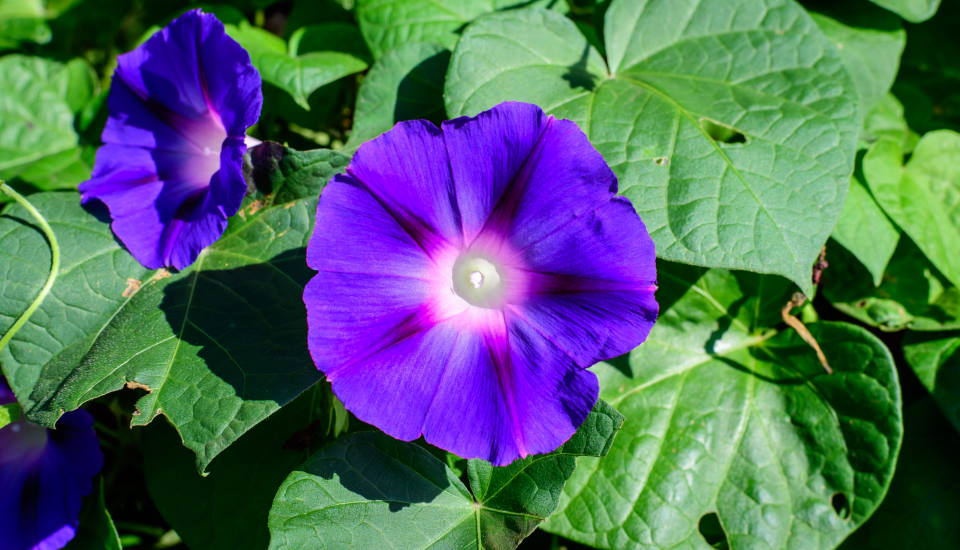
Morning glories are hardly ever troubled by pests or diseases. However, they are sometimes vulnerable to stem rot, rust, white blister, fungal leaf spot, and wilt. Caterpillars, spider mites, leaf miners, and aphids can also cause problems for our dear Morning Glories.
But none of these things are considered the biggest issue for Morning Glories. Wildlife is actually the biggest issue for Morning Glories. Animals such as rabbits, groundhogs, and deer can wreak havoc on the lower vines, particularly when the plants are young. As mentioned before, fencing is really important because they are the key to protecting your Morning Glories from any harm from the animals listed above.
Are Morning Glories Toxic?
Morning glories are not toxic as whole plants. But their seeds have toxic alkaloids in them. So just to be careful, you should keep your Morning Glories away from your pets and children.
Conclusion
We have talked about every single detail of the delicate annuals that are Morning Glories, and now you know all about the fascinating world of Morning Glories! If you follow the instructions, tips, and tricks on how to plant, grow and care for Morning Glories that are mentioned above, you can safely assume that you’ll have healthy- and good-looking Morning Glories in your garden or even in your pots and containers indoors.
Sources:

